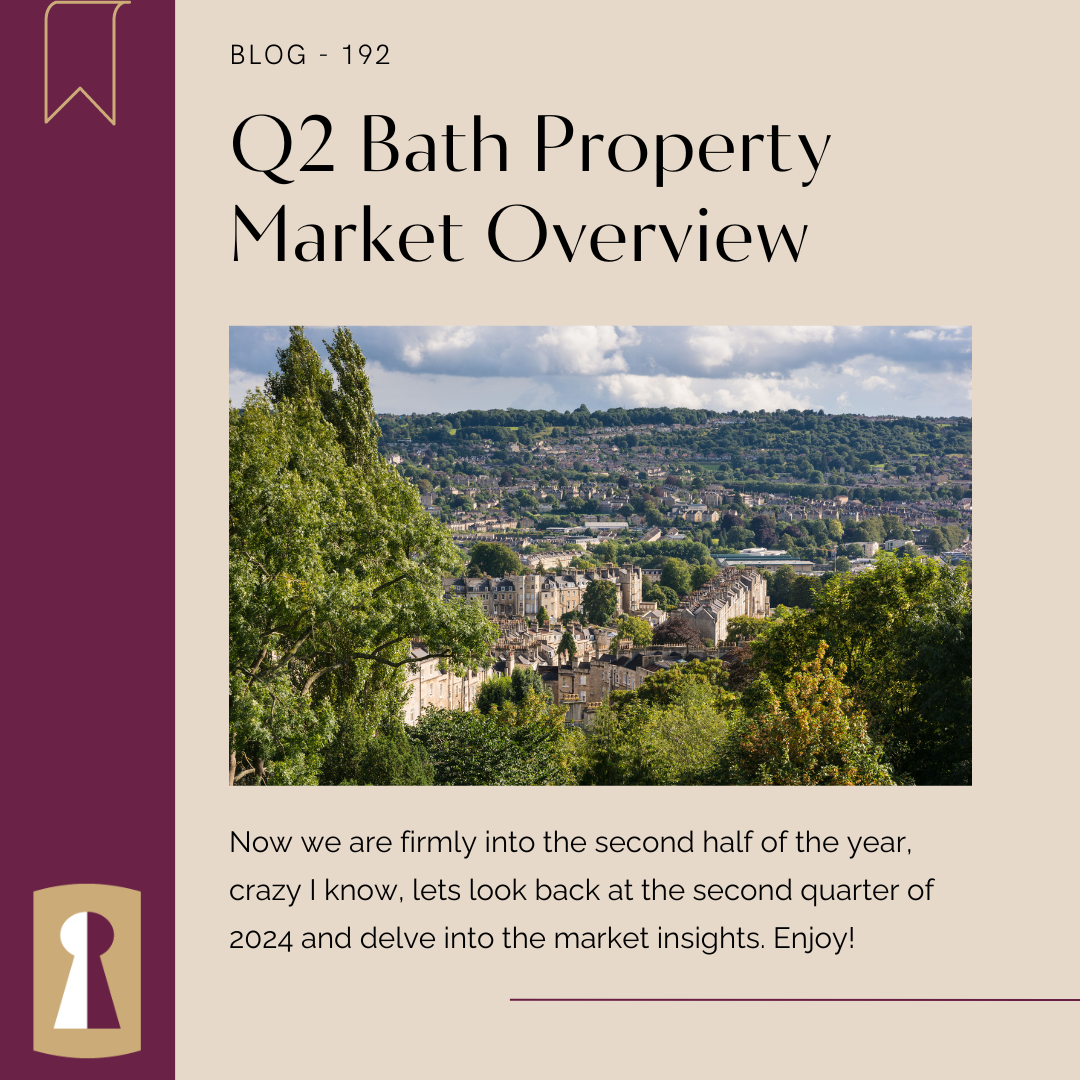It may surprise many, but despite the significant rises in inflation over the last few years, buying a house in today’s market is more affordable as a percentage of take-home pay.
First, the average value of a typical first-time buyer’s home has surged by 318% since 1989 (35 years ago for those counting), reaching £314,000 in 2024. So, you would think the title of the blog sounds…well…wrong.
However, the headline price one pays for a home is not relevant when looking at affordability, to measure this we need to look at what the home costs each month out of someone’s salary.
Despite this significant increase in headline pricing of houses over the last 35 years, the monthly mortgage payments that a first-time buyer needs to make today are significantly lower as a proportion of their monthly take-home than in 1989.
According to data from the Nationwide Building Society, today’s first-time buyers in Bath spend 41.9% of their household take-home pay on mortgage payments. This is substantially lower than the 64% required in 1989. This was due to the Bank of England’s base rate being 14%, and base wage rates being lower than they are today comparatively. So we can see a representative 34% reduction in the financial burden that a mortgage payment has today on first-time buyers compared to 1989.

Now, 1989 was 35 years ago and many may argue that as such, it is an irrelevant comparison to today’s economy. However, if we compare the data from today to a closer time, 2007, we can see that even 17 years ago, first-time buyers had to allocate 51% of their household income to their monthly mortgage payments. 17.9% higher than today’s figures which continues to show the relative affordability of a home in Bath over the last few decades.
Now we have established that when comparing % of monthly income to mortgage payments, how has this reduction happened? Well, in real terms (after inflation) incomes have risen and interest rates are much lower. UK household incomes have grown in real terms by 25% in the last 35 years, while interest rates are at 5.25%.
Beyond this, Bath’s first-time buyer affordability is influenced by several factors beyond interest rates and income. One significant aspect is the overall change in the housing market dynamics, including government policies, the availability of mortgages and demographic shifts.
UK GOVERNMENT POLICIES AND MORTGAGE AVAILABILITY:
Government policies supporting first-time buyers, such as Help-to-Buy schemes and favourable mortgage products, have made homeownership more accessible. These policies often provide financial assistance or guarantee parts of the mortgage, reducing the initial financial barriers for first-time buyers. Moreover, the regular availability of competitive mortgage products with lower interest rates and longer repayment terms (35+ years) has eased the burden on first-time buyers.
DEMOGRAPHIC SHIFTS AND URBAN DEVELOPMENT IN BATH:
Demographic changes, including the growth in urban areas and improved infrastructure, have also contributed to the housing market’s evolution. With a strategic location and vastly improved transport links, Bath has become an attractive option for commuters and young families. This has increased demand for housing, driving development projects that cater to the needs of first-time buyers with affordable housing options.
RENT VS BUY IN BATH – ECONOMIC CONSIDERATION:
As rental prices continue to rise at a considerable rate, the economic advantage of buying over renting is becoming more pronounced. Renting often involves annual rent increases, which then in turn offers no financial long-term security. In contrast, buying a home with a fixed-rate mortgage does offer financial predictability in monthly payments and property value appreciation.
However, many people will counter these arguments by saying that first-time buyers need to find large deposits. The average first-time buyer deposit in 2023 was an eye-watering £53,000. However, do remember that this is an average. 95% mortgages with 5% deposits have been available for some time now, but these do come with considerably higher interest rates and require a strong credit rating. For example, a large deposit (25%) will get to a lower interest rate (at the time of writing, the best 95% mortgage/5% deposit was at 5.2%, versus a 75% mortgage/25% deposit mortgage at 4.24%), yet if one extends the number of years one has for the mortgage, then the monthly payments will come down. (Remember to take advice from someone qualified to advise you on this).
Another advantage is that homeowners build equity. This becomes a significant financial asset over time, whereas renters do not gain any form of ownership benefit despite monthly payments.
If we are talking about the long term rental option in life then do be aware that if you retire having not purchased a home then you can qualify for support from the government for rental payments. However, if you are the sole occupant then you may only qualify for a smaller rental property payment and thus have to move upon retirement.
FINAL THOUGHTS:
The Bath property market has seen a roller coaster shift in affordability for first-time buyers over the past 35 years. While property prices have increased substantially, the proportion of household income required for mortgage payments has decreased due to lower interest rates, real-term income growth, and supportive government policies. This improved affordability, combined with the rising cost of rent, makes buying a more attractive and financially sound option for many.
The economic landscape has changed significantly, favouring first-time buyers in ways that were impossible in 1989 or even 2007. As the market continues to evolve, first-time buyers in Bath can take advantage of the current conditions to secure their financial future through homeownership. The reduced financial burden and the potential for long-term gains make now a suitable time for those considering stepping onto the property ladder.



